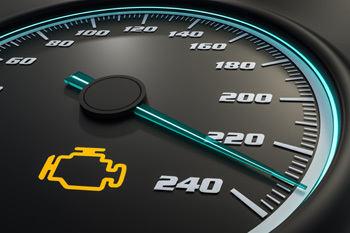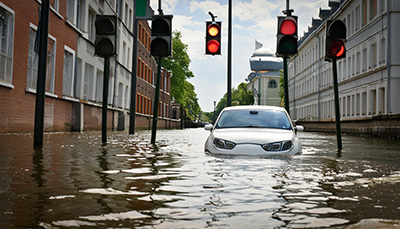Your car is a complex machine made up of numerous parts working together to keep you on the road safely. While some issues may seem minor, ignoring certain warning signs can lead to costly repairs or, worse, dangerous situations. To help you stay ahead of potential problems, here are the top five warning signs your car needs immediate repair.

1. Unusual Noises
If your car is making strange noises, don’t turn up the radio to drown them out—take them seriously. Unusual sounds often signal that something is wrong. Here are some common noises and what they might mean:
- Squealing or grinding when braking: This could indicate worn brake pads or issues with your brake system that need urgent attention.
- Knocking under the hood: A knocking noise, especially when accelerating, could mean engine trouble like worn bearings or a failing engine part.
- Hissing or whistling: A hissing noise may suggest a coolant leak, vacuum leak, or overheating engine.
Ignoring these noises could lead to more severe problems down the road. If you hear any unfamiliar sounds, it’s best to have a professional inspect your vehicle immediately.
2. Fluid Leaks
Fluid leaks are a red flag that something is wrong with your car. Each type of fluid serves an essential function, and losing any of it can affect your vehicle’s performance or safety. Here’s what to watch for:
- Bright green or orange fluid: This is likely coolant, and losing it can cause your engine to overheat.
- Dark brown or black fluid: If you notice this under your car, it could be engine oil, which is crucial for keeping your engine parts lubricated.
- Reddish fluid: This is often transmission or power steering fluid, both vital for smooth driving and vehicle control.
Any visible leak should be addressed right away, as continued driving without the necessary fluids can result in costly repairs or vehicle failure.
3. Dashboard Warning Lights
Dashboard warning lights are your car’s way of communicating potential issues. When a light comes on, it’s essential to understand what it means and take appropriate action. Some lights indicate minor issues, but others require immediate attention. Here are a few of the most critical lights:
- Check Engine Light: This could indicate anything from a loose gas cap to a serious engine problem. If this light is flashing, it’s a sign of a severe issue, and you should pull over immediately.
- Brake Warning Light: This could indicate low brake fluid or a problem with your braking system. Never ignore this light, as driving with faulty brakes is incredibly dangerous.
- Oil Pressure Warning Light: If this light comes on, your engine may be low on oil or there could be a problem with the oil system. Driving with low oil pressure can cause major engine damage.
Ignoring dashboard warning lights can lead to more significant problems, so it’s crucial to address them as soon as they appear.
4. Vibrations or Shaking
Feeling vibrations or shaking while driving is not normal and can indicate various issues with your vehicle. Here’s what some of these sensations might mean:
- Vibration when braking: This could point to warped brake rotors or unevenly worn brake pads.
- Shaking while accelerating: This could indicate an issue with your tires, wheels, or suspension, or it might mean your engine or transmission is malfunctioning.
- Excessive vibration at high speeds: This could be a sign of unbalanced or misaligned tires, which can cause uneven tire wear and lead to more serious damage.
It’s best to have your car checked out if you experience any unusual vibrations, as continuing to drive with these symptoms can make the problem worse.
5. Smoke or Burning Smell
Smoke or a burning smell coming from your vehicle is never a good sign and should prompt you to stop driving immediately. Here are some potential causes:
- Smoke from under the hood: This could indicate an overheated engine, a coolant leak, or even an electrical problem. Continuing to drive can cause permanent engine damage.
- Burning smell: A smell of burning rubber or plastic could point to worn-out belts, overheated brakes, or an electrical issue. In some cases, a burning smell can mean your car is leaking oil onto hot engine components.
If you notice smoke or a strong burning odor, pull over safely and call for assistance. Continuing to drive can put you and your vehicle at risk.
Final Thoughts
Your car will often give you early warning signs when something is wrong. By paying attention to unusual noises, fluid leaks, dashboard warning lights, vibrations, and smoke, you can catch problems before they escalate into more severe issues. If you notice any of these signs, don’t wait—bring your vehicle to a trusted auto repair shop to have it inspected and repaired as soon as possible. Taking action early can save you money and ensure your car remains safe and reliable.
Lim’s Auto Body is a full service auto body and mechanical repair shop locally owned and operated in Largo, Florida. For more information, go to our web site www.limsautobody.com or call (727) 422-3232.

